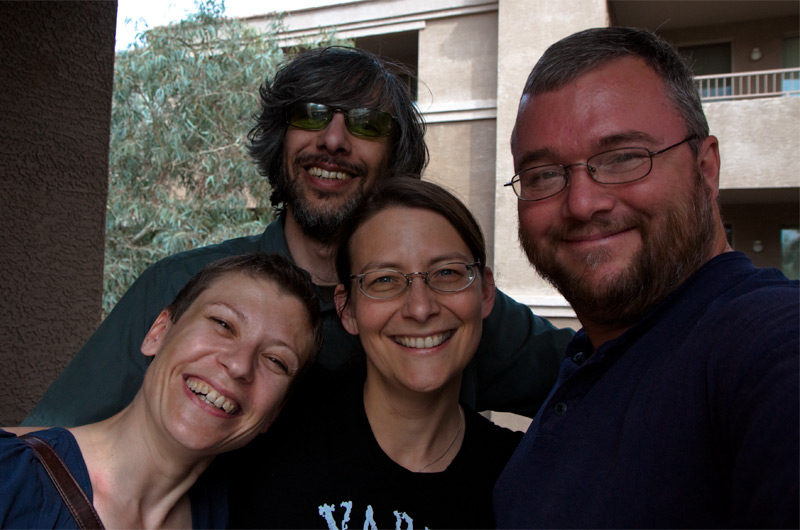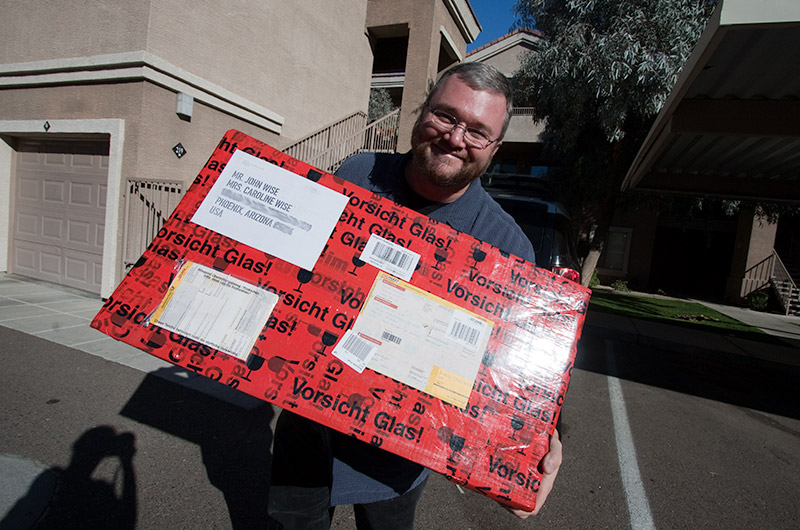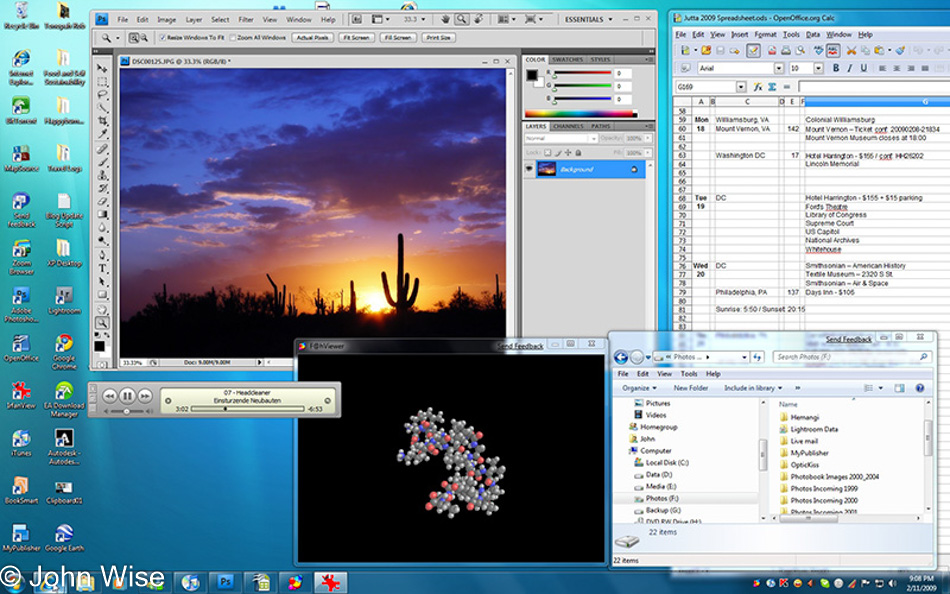
After a sixteen-year gap in communication, where not a word is spoken, an email exchanged, or a phone call made, it might be more typical that two once compatible personas have grown apart and, upon meeting that long lost friend, the spark that once brought the friendship to bear is simply no longer there. A week ago after an anonymous nearly cryptic email challenged us to remember someone from our past we learned that Taner would be visiting the United States and he would be traveling with his girlfriend Verena.
Last night, after arriving in Las Vegas a few days earlier from Berlin, Germany, Taner and Verena were knocking at our door. Would we like Verena? We know German women and they are typically tight-lipped and not easily amused. Would we still like Taner’s company? Caroline’s and my life is greatly different from our bohemian, decadent, hedonistic, and self-indulgent days when we lived in Frankfurt. Who would Taner be after all these years, a button-down business guy, an elitist art snob, a junkie? As they pass through our door and polite handshakes and hugs are exchanged I need a few minutes to stare into Taner’s face to find him behind the greying hair and beard. Meanwhile, Caroline gets busy talking with Verena. The chemistry is still there. Sixteen years of time are compressed and erased. We are about to find common ground that will likely rewarm a long-dormant friendship. As our talk extends into the late night, Caroline and Verena laugh while Taner and I reminisce and talk about our move to Phoenix and his to Berlin. They leave around 1:30 a.m.
Early in the morning, we get together again to continue where we left off just hours before. With time short as I understand the necessity to get on the road no matter how wonderful it might be to find yourself back with an old friend where one can’t help but wish there was more time available than reality is dictating, we get in the car and onto the road so I can give Taner and Verena a small sense about the city we live in. Our first stop is at Tonopah Rob’s farm. Coming from Berlin I felt they would appreciate the surreality of farming in the desert and I wanted them to meet Rob’s turkeys which I was fairly certain these two would never have seen before. Having not eaten breakfast these two were hungry by early afternoon and were wanting the best hamburger I knew of. Claim Jumper won out over In-N-Out with the Widowmaker burger being ordered for both Taner and Verena who said it was the best burger they’d ever had. I couldn’t disagree, it’s my favorite too.
After lunch, we picked up Caroline and drove to a local Walmart for them to witness our American consumption a la Gargantua. The patrons of Walmart in all their glorious peculiarities didn’t miss a beat in earning the awkward stares of tourists in shock at how extreme not only the variety offered on the store shelves are but the diversity of strangely clad obese people driving rascals through the autobahn wide isles of America’s shopping behemoth can be. From Walmart, it was a drive across Phoenix to Lee Lee’s Oriental Market. The colors, packaging, and exotic new products were too much for Taner who was soon armed with Caroline’s camera so he might be more discreet in capturing the fish heads, neon, and brightly packaged foodstuffs without having a store worker asking him to leave. As the theme seemed to be working we once more got in the car and this time drove to Ranch Market on Roosevelt Street.
Ranch Market is a Mexican grocery with blaring music, fluorescently bright pink, yellow, and green cakes, and entire cow heads on display in the meat counter. Our first stop was at the aqua Frescas counter to buy a horchata (rice milk), jamaica (hibiscus), Sandia (watermelon), and a limonade. We walked by the prepared hot foods, the tortilla makers in the corner, and inspected the chicharrones (fried pig skins), mountains of chili peppers in various shapes and sizes, coconuts, tamarinds, and nopales (cactus). Caroline and Verena wandered one way, Taner and I the other – this was better than nightclubbing. After Taner shot a few dozen photos a very polite security officer informed us that one or two photos were ok but that we should put the camera away.
Dinner for Caroline and I was at Lone Star Steakhouse, Taner and Verena were still full from the burger. Back at our apartment, Taner and I tried to work out a loose itinerary they might use as inspiration for the rest of their three-week American southwest vacation. We talked and planned until nearly three in the morning before we pushed them out to their hotel. In the morning I made a breakfast of potatoes, eggs, and bacon for the four of us, packed them an ice chest with frozen mango, walnuts, almonds, dried apple rings, dried apricots, and some other assorted snacks, then armed them with road maps before printing the itinerary with a few last-minute changes and, finally, encouraging these two to get going on their road trip that might take them to Monument Valley, Moab, across Nevada, into Oregon, the Redwoods, San Francisco, and back to Vegas. We had a blast visiting with Taner and Verena and sincerely hope that we’ll see these two again much sooner than later. How very perfect this last forty-eight hours have been – thanks Taner and Verena for including us in your travels.





